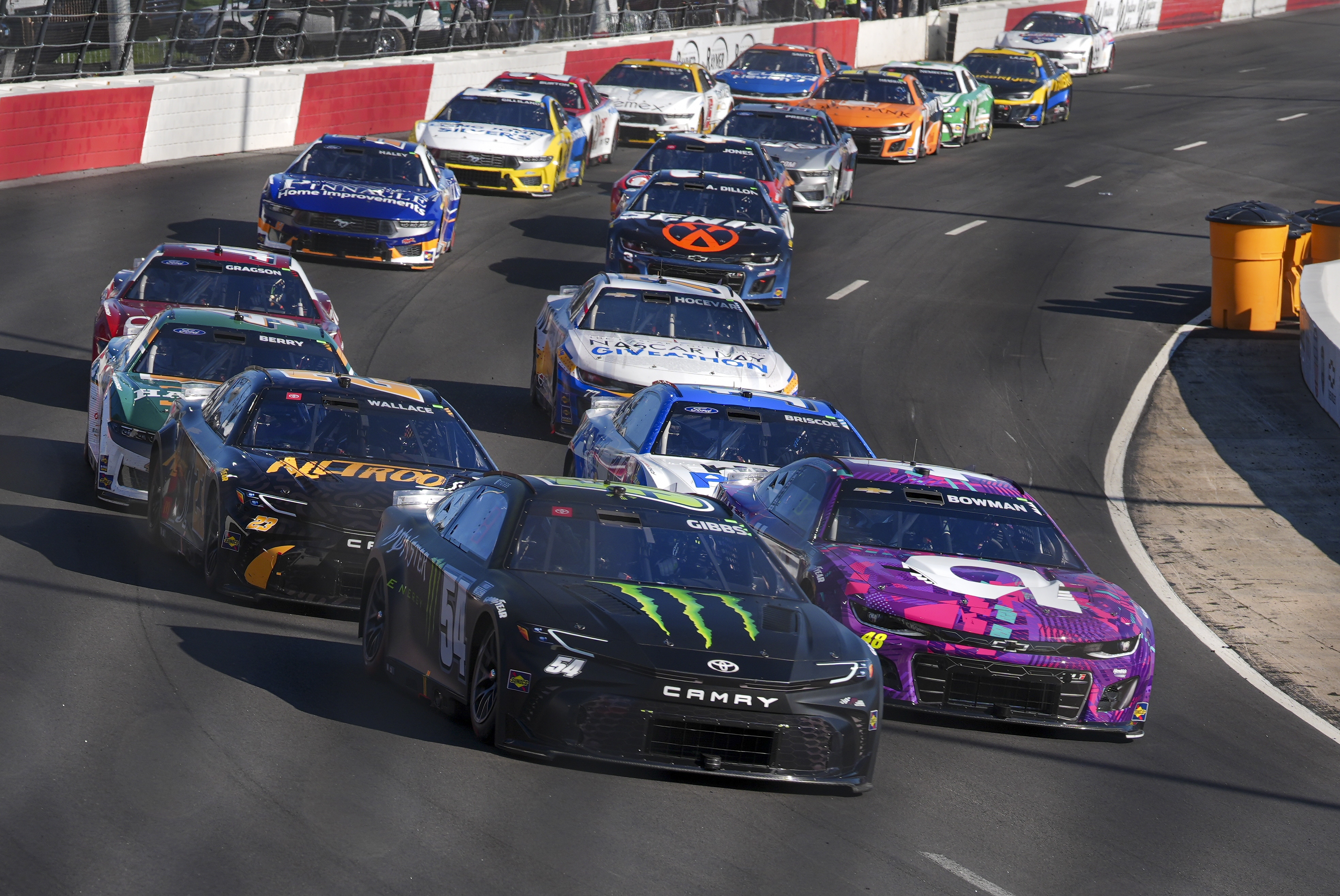Over the years, NASCAR has experienced the opening and closing of many tracks. The government has seized some for redevelopment while shifting industry trends have affected others. Here are seven tracks that no longer welcome NASCAR races.
7. Chicago Motor Speedway
Located at Cicero, Illinois where the Sportsman’s Park horse racing track once stood, the Chicago Motor Speedway was a one-mile oval. It was one of the three racetracks that held both NASCAR events and horse racing events. It hosted the NASCAR’s Camping World Truck Series for two years starting in 2000.
The lost track also hosted a CART race. But with the construction of the Chicagoland Speedway in 2001, fans stopped coming to the Chicago Motor Speedway, and thus, it closed. It was a fairly brief but exciting segment in NASCAR’s history in the city of Chicago.
Also Read: Bubba Wallace, Ross Chastain bumped into long NASCAR playoff odds after Daytona
6. Pikes Peak International Raceway
Another track that was important in NASCAR’s history was Pikes Peak International Raceway in Fountain, Colorado. The mile-long track started to host the Busch Series and Camping World Truck Series in 1998, where drivers like Matt Kenseth and Ron Hornaday Jr. won races there.
Other series that have raced in this lost track include NASCAR’s K&N Pro Series West, where some of the past winners include Michael Waltrip and Kevin Harvick. Although Pikes Peak was very popular, NASCAR held its last event there in 2005. Since then, the track changed its focus to driving schools and training centers.
Related: Weather Woes: How extreme conditions have impacted NASCAR races
5. Louisville Motor Speedway
Louisville Motor Speedway was a 3/8 mile paved track located in Kentucky that had three turns. People often compared it to a smaller version of Pocono Raceway. It had sharp elevation changes to make it feel like a road course even though it was rather short.
From 1995 to 1999, the track hosted the Camping World Truck Series, with some of the great winners being Butch Miller and Mike Skinner. However, Kentucky Speedway’s construction near Louisville led to the closure of this track. The area now serves as an industrial park.
Related: NASCAR’s 6 greatest crossovers into the movies, including Will Ferrell in ‘Talladega Nights’
4. Nazareth Speedway
Nazareth Speedway was a five-turn track based in Lehigh Valley, Pennsylvania. It opened originally as a dirt track in 1910 but was paved in 1987. The track was also famous for holding both open-wheel and NASCAR races with the Busch Series and the Truck Series.
Kurt Busch won the first Busch Series race in 1988 while Martin Truex Jr. won the last one in 2004. However, over the years the track failed to generate sufficient revenue and lost its status as a venue for major events after 2004.
Also Read: NASCAR standings: NASCAR Cup Series points leaders 2024, NASCAR playoff picture
3. Rockingham Speedway
The Rockingham Speedway is one of the NASCAR lost tracks that many fans still miss. Based in North Carolina, it opened in 1965 as the North Carolina Motor Speedway. It became famous for spectacular races. Unfortunately, by 2004, attendance was on the decline and the Ferko lawsuit did the final blow to Rockingham’s spot on the Cup Series schedule.
Rockingham went on to host fewer events, including ARCA races and a short-lived revival of the NASCAR Truck Series in 2012, but the financial difficulties continued. In the last few years, there has been a debate about revitalization. In 2023, plans to repave the track with the help of federal funding suggested the possibility of the track’s revival.
Related: NASCAR’s 6 greatest crossovers into the movies, including Will Ferrell in ‘Talladega Nights’
2. I-70 Motorsports Park
The I-70 Speedway, located in Odessa, Missouri, was a very popular high-banked half-mile oval short-track racing circuit. It was especially famous for its late-model stock car races and featured big names like Rusty Wallace and Mark Martin.
This lost track was also part of the Camping World Truck Series schedule, where Mike Skinner became the first race winner in 1995. Unfortunately, the I-70 faced some problems and ceased operations in 2009 but has since reopened as a dirt track.
Related: 10 Most Amazing Records in NASCAR History, Including Most Consecutive Cup Series Titles
1. North Wilkesboro Speedway
The North Wilkesboro Speedway began operations in 1949 as a 0,625-mile oval in North Carolina. Closely connected to the birth of stock car racing, the track was home to intense and competitive racing. It was very much a part of the early history of stock car racing and was associated with moonshining. Some of the drivers who raced there include Junior Johnson and Bob Flock and the fans always enjoyed the spirited events.
However, the lost track could not adapt to the modern world as much as the larger sites could. It failed to provide modern amenities and the prize money was relatively low as compared to other places such as Daytona and Talladega during the 1980s and 1990s. Its last NASCAR Cup racing event was in 1996 when Jeff Gordon emerged as the winner.
Related: 10 best NASCAR drivers of all time

